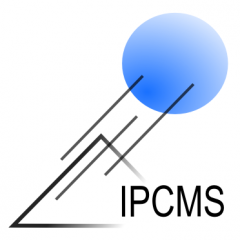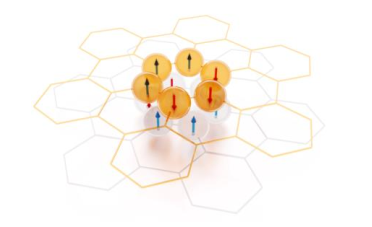Paul ROBINEAU (Institut pluridisciplinaire Hubert Curien)
Seminar presented by Philippe POULIGUEN
Philippe POULIGUEN (Agence Innovation Defense (AID)
Seminar DON / Axis 2 presented by Pr. Keiichi INOUE
Speaker : Pr. Keiichi INOUE (Functional Materials Group, The Inst. for Solid State Physics, University of Tokyo)
Rhodopsins, or retinal proteins, are light-sensitive membrane proteins, with very important biological functions. In vertebrates, rhodopsins are the sensors for vision.
Pr. Inoue is a world-leading expert in the photochemical studies of microbial retinal proteins (https://www.icpworldcongress.com/keiichi-inoue). His research aims at a detailed molecular understanding of how the different biological functions of these rhodopsins are encoded in the structural and spectroscopic properties. The abstract can be found : here
Contact: Stefan Haacke (stefan.haacke@ipcms.unistra.fr)
Seminar Axis 1 “Quantum sciences and materials” presented by : Clément Pellet-Mary
Speaker: Clément Pellet-Mary, University of Basel, Switzerland
The abstract is available there.
Seminar Axis 1 “Quantum sciences and materials” presented by Cyrille SOLARO
Speaker: Cyrille Solaro, CESQ, Strasbourg
The abstract is available there.
Seminar DCMI and Axes 3 and 5 : presenetd by Raquel UTRERA MELERO
Abstract : Materials exhibiting luminescence stimuli-responsive properties, present potential application as detection systems. Among these materials, copper (I) iodide molecular clusters coordinated by phosphine ligands, exhibit thermochromic and mechanochromic luminescence properties. These compounds are characterized by a change of their emission wavelength in response to temperature or mechanical stress. The establishment of structure- properties relationships permit to study the mechanisms responsible for their properties. The main characterization techniques used are solid-state NMR, X-ray diffraction, Infrared and Raman spectroscopies. In addition to the thermo and mechanochromic properties, these compounds have the particularity of exhibiting aggregation-induced emission (AIE) properties. The understanding of properties is crucial for applications. Therefore, DFT (Density Functional Theory) calculations are also carried out to rationalize the different results and in particular the optical properties. In the last years, copper has been proposed as a substituent in lead perovskite-based devices due to its non-toxic nature. We are currently investigating the use of copper perovskites for solar cells.
Seminar IPCMS presented by : Prof. Ifor D.W. Samuel
Abstract :
Organic semiconductors are remarkable carbon-based materials that combine novel semiconducting optoelectronic properties with simple processing. They can be used to make printed and flexible electronics, and their properties (e.g. colour) can be tuned by changing their chemical structure. Organic light-emitting diodes (OLEDs) are compact visible light sources that are now found across the world in mobile phone displays and televisions. This talk will give an introduction to organic semiconductors and optoelectronic devices made from them.
It will then explore two emerging fields of application. The first is photodynamic therapy (PDT). In PDT light in combination with a light-activated chemical leads to the generation of reactive oxygen species. OLEDs are very attractive light sources for PDT because they emit over an area, are thin and potentially flexible. We have shown that PDT with OLEDs can kill skin cancer, parasites and bacteria. Another emerging application is in visible light communication (or Li-Fi) in which light is modulated to encode information to supplement Wi-Fi. Finally a new organic optoelectronic device – a laser electrically driven by an OLED will be presented.
Seminar of Axis “Quantum sciences and materials” presented by Arthur Veyrat
Speaker : Arthur Veyrat, Laboratoire de Physique des Solides, Equipe MESO, Orsay
The abstract is available there.
Seminar presented by : Niels de Jonge
Speaker : Niels de Jonge (Bruker AXS, Karlsruhe, Germany.)
Abstract : Liquid phase electron microscopy (LP-EM) is capable of studying a wide range of sample from materials science, for example, nanoparticles, and biological samples such as proteins and cells in liquid [1]. Different experimental systems are presented, and the physics of image formation is discussed. The obtained spatial resolution is typically limited by ration damage [2], but damage mitigation by at least an order of magnitude is possible [3]. The full scale application of LP-EM for soft matter research still faces several challenges but strategies to to overcome them are emerging, so that time-resolved imaging of processes in soft-matter samples seems within reach [4].
Employing the unique capabilities of LP-EM, we studied the spatial organization of the membrane protein HER2 in cancer cells. This protein is a member of the epidermal growth factor receptors (EGFRs), and plays an important role in breast cancer aggressiveness and progression. Breast cancer cells were examined by labeling HER2 proteins with quantum dot (QD) nanoparticles for correlative fluorescence microscopy and LP-EM [5]. We discovered a small sub-population of cancer cells with a different response to a prescription drug indicating a possible relevance for studying the role of cancer cell heterogeneity in the development of drug resistance, and studied biopsie samples from patients [6].
LP-EM was also used to directly image dynamic self-assembly behavior of nanoparticles in liquid from which the interplay between nanoparticle shape, ligand shell structure, and substrate–nanoparticle interactions was studied [7].
References:
- 1. Nat Nanotechnol 6, 695 (2011).
- 2. Nat Rev Mater 4, 61 (2019).
- 3. Nano Lett 18, 7435 (2018).
- 4. Adv Mater 32, 2001582 (2020).
- 5. Sci Adv 1, e1500165 (2015).
- 6. Mol Med 25, 42 (2019).
- 7. Adv Mater 34, 2109093 (2022).
Seminar DCMI-Axis 5 presented by Thomas Cottineau
Speaker : Thomas Cottineau (Equipe Photocatalyse & Photoconversion –
Institut de Chimie et Procédés pour l’Energie, l’Environnement et la Santé
(ICPEES UMR 7515 CNRS / Université de Strasbourg)



